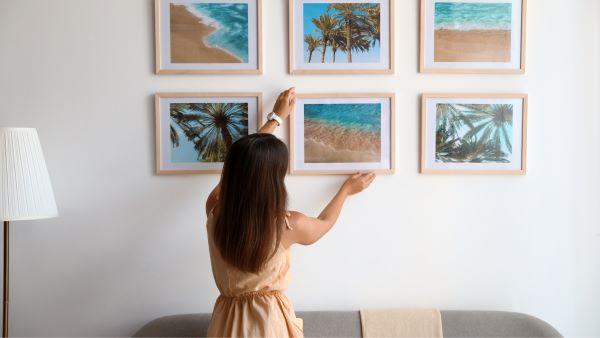How to Pack Pictures for Moving
Picture frames and artwork are delicate. Without the right preparation, placing them in the back of a moving van is risky. One hard bump and they could bang against a heavy box or piece of furniture, possibly tearing a print or breaking your glass framing. To keep them safe, make sure you know how to pack pictures for moving.
Gather the Right Supplies
Before you can start, there are a few items you’ll need to purchase. Most are available at your local hardware store. Moving companies are another great resource. They’ll not only have everything you need; they’ll even bring it straight to your door. To pack pictures, you’ll need:
- Packing paper
- Bubble wrap
- Packing peanuts
- Packing tape
- Corner protectors
- Mirror or picture boxes
Unlike regular moving boxes, which tend to be short and wide, picture boxes are tall and thin. For particularly wide pictures, you can combine boxes to form one large, oversized container.
Wrap Your Pictures
Pictures require more care than most of your other belongings. You can’t just throw them in a box. Preparation takes a little bit of time. Once you’ve gathered the requisite supplies, start by:
- Taping over sharp hanging brackets. They could puncture the box or tear through protective padding.
- Reinforce the glazing (frame glass) by taping a large “X” over it. This will help protect it from bumps and jarring impacts, and keep it intact in case of an accident. Naturally, if your picture doesn’t have glazing, you can skip this step.
- Cover up the corners with bubble wrap or corner protectors. Corners are the most vulnerable part of a picture frame, since they protrude and bear a larger portion of its weight.
- Place the picture face up on a sheet of packing paper at least twice its size.
- Pad the picture with a sheet of bubble wrap. Make sure the bubbles face inward, against the picture. When bubbles face out, they’re more likely to pop. Facing in, they provide an unbroken layer of protection.
- Fold the packing paper around the frame and tape it in place.
Unglazed artwork, with the canvas exposed to the air, should be wrapped in packing paper first, to protect it from moisture, then given a layer of bubble wrap. Make sure the paper is non-acidic, so it doesn’t damage the paint. (Most packing paper is non-acidic, but not all.) Whatever you do, don’t try to save money by wrapping pictures in newspaper. Printing ink rubs off easily and can leave a stain.
Pack Your Pictures
Cushion the bottom of your picture box with bubble wrap, packing paper, or packing peanuts; then slide the picture inside. If you’re packing multiple pictures in the same box, wrap each one individually. Once the box is full, fill any empty space with extra padding so everything’s held firmly in place. If you’re in a wet or humid climate, or moving to one, tape the seams to prevent moisture from seeping in. After you’ve finished sealing the box, take a marker and write “FRAGILE” in large letters on both sides of the box, as well as a note indicating which side the glass is facing.
Load Your Pictures
Picture boxes are designed to hold up to 60 pounds, but it’s safer to keep them below 40 or 50. When placing them onto the truck, always stand them upright. Laying them flat exposes their weakest side. Never stack anything on top of them either. Frames aren’t designed to support weight. On the other hand, wedging them between large, flat objects like bookcases is a good way to prevent them from being jostled during the ride to your new home.
Trusted Household Moving Services
When it comes to interstate moves, North American has been the leading choice for homeowners for the past ninety years. Our comprehensive moving services cover every aspect of your relocation, from planning to packing to shipping, storage, and final delivery. We tailor our services to your needs, allowing you to choose the options that fit your budget and schedule. Make your move as seamless as possible. Contact us today for a free quote!

